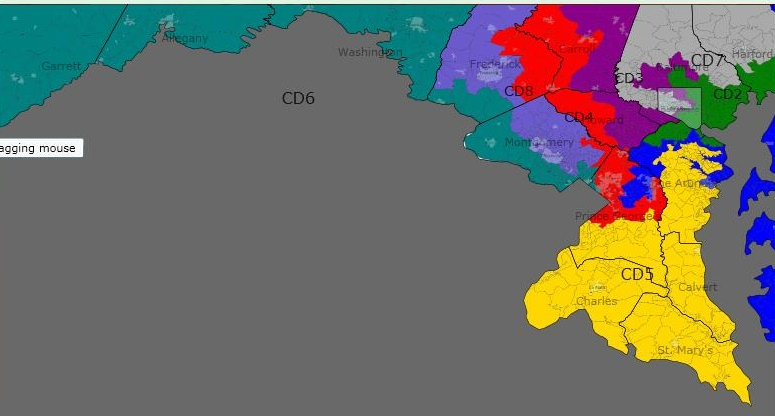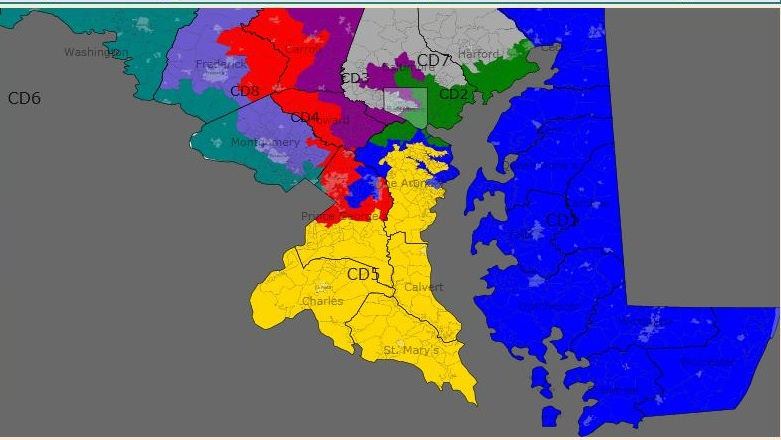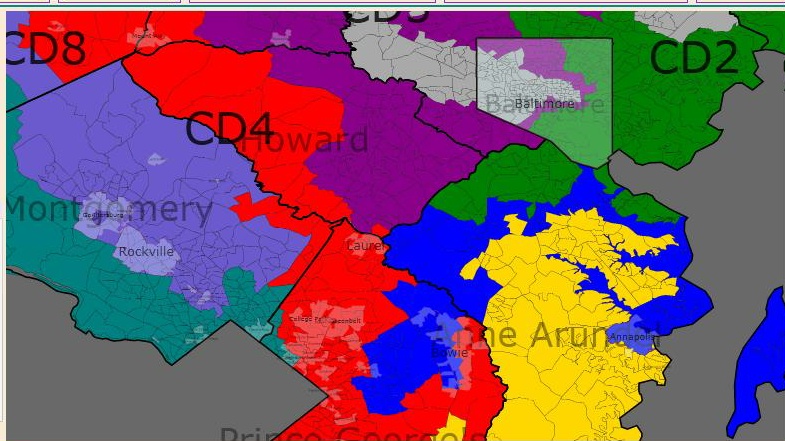After seeing all the great maps here I’ve decide to give it a try. This is my first attempt at redistricting a state and my first diary. While doing this for the first time I kind of wished I had lived in a smaller state, but Texas is where I grew up and where I live. Since this is my first attempt at redistricting a state I want constructive criticism, but please be gentle 
With Bill White running for Governor and the Democrats a few seats from the majority in the House, what would a Democratic Redistricting of Texas look like?
My goals for doing a Democratic redistricting of Texas were to
1. Create at least two new Democratic seats in DFW
2. Clean up Travis County
3. Clean up Harris County, add another Dem seat.
4. Work to weaken several GOP incumbents including Sessions and Culberson.
All districts have a +/- 2.5% population deviation from the average. I will describe each group of district based on metro area or geographic location.


East Texas
CD-1 Largely consists of the currently existing CD-4. Like most of rural Texas it is very white, very conservative. 71% White, 15% African American, 10% Hispanic Safe R
CD-5 now includes Ellis County and the City of Tyler and is out of Dallas County entirely. This new district has the potential for a very entertaining primary between Joe Barton, Louie Gohmert and Jeb Hensarling. 70% White, 10% African American, 16% Hispanic Safe R
CD-6 which had a significant chunk of its population in the DFW metro area is now entirely rural. 69% White, 15% African American, 12% Hispanic. Safe R
CD-17 although this district is in Central Texas it shows up good in the East Texas pic. I am one of the people who remains amazed at Chet Edwards-D ability to hold on to his heavily GOP district. Unsure of how to protect him I only have a few choices since his district gained population so Bosque, Somervell, Madison and Grimes Counties have been removed from his district. Waco and Byran/College Station are still within CD-17 This district is probably still a Toss-up as Edwards will have to work hard to maintain this seat. 67% White, 9% African American, 19% Hispanic

Greater Houston Area (the Rural/Suburban districts)
CD-33 is a rural district which extends from greater Houston to Bastrop Country which is southeast of Austin which is a solid GOP seat. 61% White, 11% African American, 25% Hispanic. Safe R
CD-22 is now almost entirely contained within Fort Bent County with small pieces in Waller and West Harris County. Obama barely lost Fort Bend County, and despite being a minority-majority district I think this seat stays GOP. 44% White, 17% African American, 24% Hispanic, 12% Asian Likely R
CD-14 Ron Paul isn’t going anywhere. 56% White, 8% African American, 30% Hispanic. Safe R
CD-08 contains north suburban Houston, the district is largely split between the fast growing Montgomery County and North West Harris County. 71% White, 5% African American, 16% Hispanic, 5% Asian. Safe R
CD-02 Rural/suburban Houston contains Beaumont and Port Arthur. 62% White,, 18% African American, 15% Hispanic. Safe R

Greater Houston (the Urban/Suburban districts)
CD-09 Now rests entirely within Harris County, other than a small extension to the west of CD-07 this district remains largely unchanged. 17% White, 32% African American, 36% Hispanic, 11% Asian. Safe-D
CD-07 is now more Urban, it has essentially been shifted a big to the east which moves it a bit into south Houston. The conservative west part of his district has been annexed by conservative CD-08. 46% White, 12% African American, 33% Hispanic, 5% Asian. Leans D
CD-18 and CD-29 were both redrawn to undo the ugliness of the previous districts. CD-18 15% White, 30% African American, 49% Hispanic. CD-29 17% White, 14% African American, 65% Hispanic. Both remain safe D.
CD-35 Contains a good chunk of the currently existing CD-22 and is on the cusp of being a minority-majority district. 53% White, 10% African American, 29% Hispanic, 4% Asian Lean R

Travis County (Austin)
CD-10 Contains most of Austin. 54% White, 6% African American, 32% Hispanic, 5% Asian, Safe D
CD-25 At first I thought I drew a GOP leaning seat here but it may be a Dem leaning seat. This district contains the remainder of Austin as well as Round Rock, Georgetown and Cedar Park. If Dems organize well enough this could very well be a Dem held seat. 56% White, 9% African American, 27% Hispanic, 5% Asian. Toss-up

Bexar County (San Antonio)
CD-21 This district is heavily Hispanic, much of this district is part of the former CD-23 and CD-20. Ciro Rodriguez may opt to run here instead of CD-23 for reasons which will be clear when CD-23 is described. 29% White, 4% Black, 61% Hispanic Safe D
CD-20 Central and South San Antonio, like CD-21 this district is heavily Hispanic. 30% White, 6% Black, 60% Hispanic Safe D

South and Southwest Texas
CD-27 Remains largely unchanged, just tightened up because of the population increase in South Texas. 20% White, 2% African American, 75% Hispanic Safe D
CD-15 Much of the Rio Grande Valley. Safe D
CD-28 This guy extends from South San Antonio all the way down to Hidalgo county. 34% White, 6%, African American, 56% Hispanic Safe D
CD-23 Laredo is back in this heavily Hispanic district. 82% Hispanic and 15% White makes this the most Hispanic district in the state.
CD-16 In El Paso remains largely unchaged and is a bit more compacted. Safe D

West and Central Texas
CD-13 A true West Texas district! Contains the cities of Amarillo and Lubbock. An interesting note about this district is that it is only 57% White, the remainder is 33% Hispanic and 5% African American. I don’t know much about West Texas but I was expecting a much higher percentage of white folk. However given the demise of the rural Democrats in Texas this district remains in the GOP hands. Safe R
CD-19 Midland-Odessa and Abilene are the cities in this geographically huge district. 58% White, 5% African American, 33% Hispanic. Safe R
CD-11 This one encompasses a lot of Lamar Smiths former CD-21. San Angelo and part of New Braunfels make up this heavily GOP district. Loving County which is also the least populous County in the Country is also here. 68% White, 2 % African American, 26% Hispanic. Stonewall, the birth place of President Lyndon Johnson is in this district. Safe R
CD-31 Another rural conservative district located in Central Texas. 64% White, 12% African American, 18% Hispanic. Safe R
CD-04 Although this district is part of the DFW Metroplex it shows up nice on this image. This district includes the northern parts of Denton and Collin County which are two of the fastest growing counties in the state. At 78% White, 4% African American and 12% Hispanic this rural district is a GOP stronghold. Contains Wichita Falls, Sherman and Denison, the later is the birthplace of President Dwight Eisenhower. Safe R

DFW Metroplex
CD-36 This district which contains several Far North Dallas suburbs including McKinney, Allen, Frisco, Flower Mound and Denton is solid GOP all the way. 68% White, 7% African American, 17% Hispanic. Safe R
CD-12 The C shape of this district obviously stands rightly for “conservative”. The most conservative parts of Americas second largest conservative urban county are here. Conservative parts of south and west Arlington, West and North Tarrant County lock up this district as a solid GOP seat. Safe R
CD-26 Situated in Central Fort Worth extending out into south Fort Worth and west into Arlington. The Democratic Party would lock this one up. 37% White, 21% African American, 37% Hispanic. Safe Dem
CD-24 This guy straddles the Dallas-Tarrant County line and is in an area of Dallas and Tarrant County where local Democrats have been having a lot of success in state House races the past few cycles. 42% White, 14% Black, 34% Hispanic. Lean D
CD-30 This was the sole Democratic Representative in DFW after the redistricting of 2003. CD-30 does remain the most African American in the state, however the district now grabs the conservative enclave of Highland Park in near the center of Dallas county. 25% White, 38% African American, 32% Hispanic. Safe D
CD-03 Another district where local Democrats have been having great success at winning State House Seats. 42% White, 16% African American, 33% Hispanic and 6% Asian. I really want classify this seat as Lean D but I don’t think it is quite there yet. Toss-up
CD-34 Now the “What…” moment will be answered regarding this creatively drawn district. This district is drawn to strengthen the Democratic presence in CD-32 and CD-03 by moving a lot of the strong GOP north Dallas areas into a safe GOP seat with Plano. CD-34 cuts straight down into Dallas County and ropes up University Park, a conservative enclave just north of Highland Park. Plano is one of the most conservative cities in the country and is almost entirely within this district. 64% White, 7% African American, 12% Hispanic, 12% Asian Safe R
CD-32 This majority Hispanic district is now ready for to be picked up by a Dem. Heavily Democratic portions of south Dallas are included and heavily GOP sections of north Dallas are included in CD-34. 28% White, 11% African American, 54% Hispanic. Likely D









